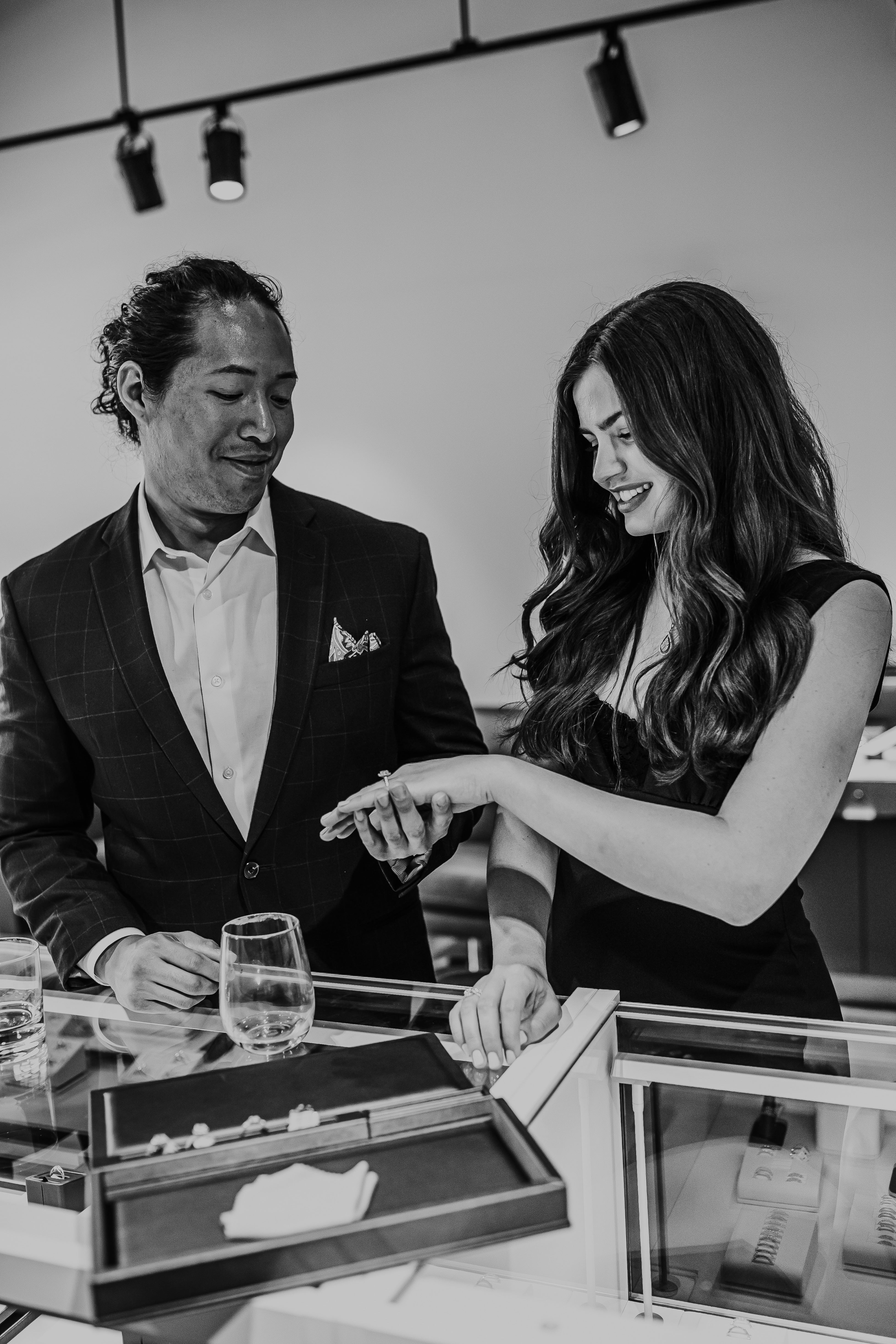EDUCATION
CUT
The most important consideration of a diamond’s overall beauty is cut. Cut refers to how well a diamond can absorb and reflect light. Although cut grade doesn’t always determine a diamond’s overall beauty. The overall proportions, brightness, fire and scintillation are referred to as the diamonds make. Diamonds with similar gradings will look different when compared side by side. The Diamond Bar insists showing clients this difference to instill confidence in your purchase.

CARAT
Carat weight is the measurement of how much a diamond weighs. The greatest misconception consumers have is that carat dictates size. However, since all diamonds are individually cut, it’s common for a diamond with a larger carat weight to actually have smaller dimensions than a stone of lesser weight.

COLOR
Diamonds are graded on the amount of color they have or don’t have. On a scale of D to Z, colorless diamonds fall into the D, E, and F color range. A color grade of D is awarded to rare stones that are completely colorless. Colorless diamonds are rare, sought after, and therefore more expensive when compared to others.
Aside from a diamond’s overall beauty, color is one of the most noticeable characteristics. Though two stones may have the same color grade, it does not mean they have the same color saturation and hue.

CLARITY
Diamonds form in the earth’s depths, under extreme heat and pressure causing internal inclusions and external blemishes. The 5 factors that go into a clarity grade are the number, location, size, relief, and nature.
No two diamonds are the same. Since the variety of inclusions vary, all diamonds graded with a similar clarity will look different from one another. It is very important to view the inside of the diamond before it is mounted into a ring. Certain inclusions depending on their size and location can alter its overall beauty and durability.




